The entertainment world recently lost one of its most transformative talents with the passing of Val Kilmer, an actor whose chameleon-like ability to inhabit characters set him apart in Hollywood. Throughout his remarkable career, Kilmer demonstrated an almost supernatural capacity to disappear completely into his roles, often becoming unrecognizable as he fully embodied characters that ranged from rock icons to comic book heroes. His recent departure leaves a void in cinema that reminds us to look back at the extraordinary range and commitment that defined his artistic legacy.
1. Jim Morrison in “The Doors” (1991)
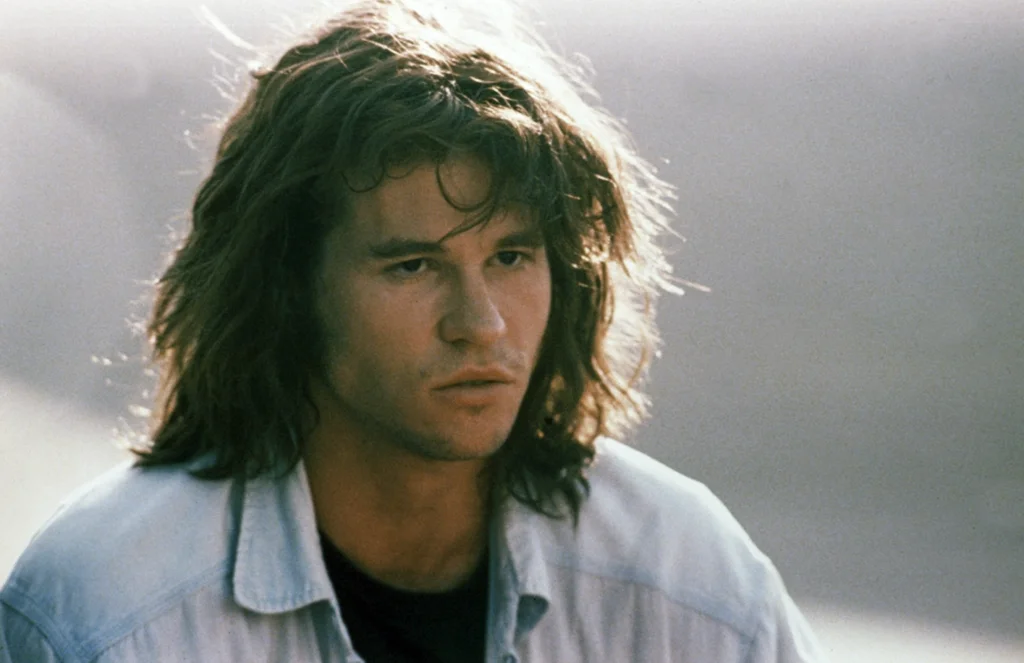
Val Kilmer’s portrayal of the enigmatic Doors frontman Jim Morrison remains perhaps his most astonishing transformation, with many who knew the actual singer claiming they couldn’t distinguish between footage of Morrison and Kilmer’s performance. Kilmer spent months living and breathing as Morrison, learning to sing over 50 songs in the rock legend’s distinctive voice and adopting his mannerisms with uncanny precision. The physical resemblance was striking, but it was Kilmer’s ability to capture Morrison’s mercurial spirit—the poetic sensitivity juxtaposed with self-destructive impulses—that made the performance truly transcendent. As written on The Hollywood Reporter, his performance as Morrison is remembered as one of Kilmer’s most powerful and resounding.
Director Oliver Stone pushed Kilmer to psychological extremes during filming, but the actor’s commitment never wavered as he inhabited Morrison’s complex psyche. Kilmer performed all the concert scenes himself, with actual Doors members reportedly stunned by how thoroughly he channeled their former bandmate’s stage presence and vocal style. This role demonstrated Kilmer’s willingness to surrender himself completely to a character, establishing a pattern of immersive performance that would define his most memorable work throughout his career.
2. Doc Holliday in “Tombstone” (1993)
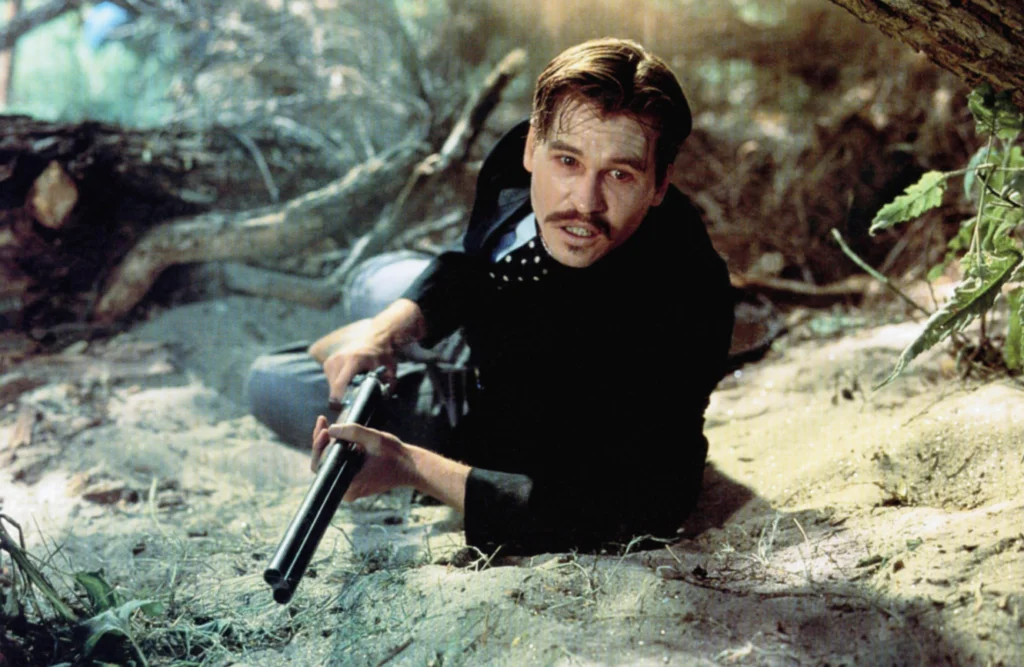
Kilmer’s portrayal of the tubercular, quick-witted gunslinger Doc Holliday in “Tombstone” elevated what could have been a standard Western into something extraordinary through his scene-stealing performance. With a Southern drawl that dripped like honey over ice and a physically gaunt appearance that suggested Holliday’s declining health, Kilmer created a character simultaneously charming and deadly. His delivery of the now-iconic line “I’m your huckleberry” transformed a simple phrase into one of cinema’s most quoted moments, demonstrating his gift for finding the perfect cadence and emphasis to make dialogue memorable. Kilmer and c-star Kurt Russell even developed a unique bond while filming together, to the point that, according to People, the two exchanged dark gifts before parting ways.
The actor lost significant weight to portray the consumptive Holliday and researched extensively to capture the historical figure’s educated background and dental expertise. Despite being a supporting character, Kilmer’s Holliday became the film’s most memorable element, with his complex friendship with Kurt Russell’s Wyatt Earp providing the emotional core of the story. This performance showcased Kilmer’s ability to find humanity in characters that could easily become caricatures, a talent that would become his hallmark as an actor who never took the easy path to characterization.
3. Batman/Bruce Wayne in “Batman Forever” (1995)
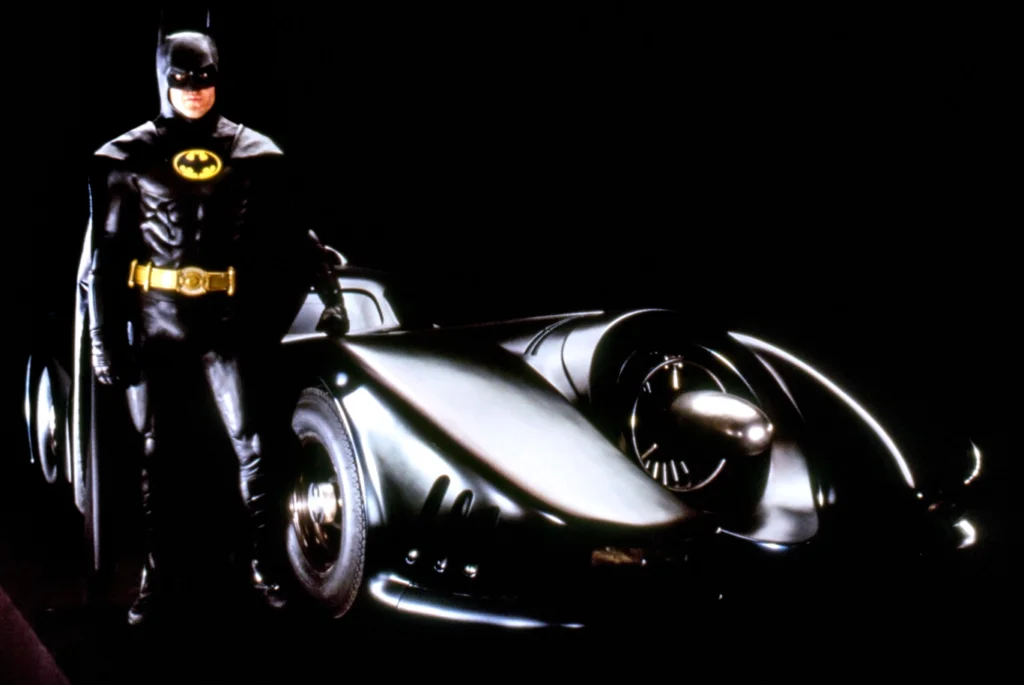
Taking on the iconic cape and cowl after Michael Keaton’s departure, Kilmer brought a different energy to the Dark Knight in Joel Schumacher’s “Batman Forever,” finding the psychological complexity beneath the franchise’s increasingly colorful aesthetic. His Bruce Wayne carried the appropriate billionaire swagger while suggesting the character’s underlying trauma, giving weight to a film that otherwise leaned toward camp. Kilmer’s physical commitment to the role was evident, with his chiseled physique and strong jaw making him perhaps the most visually comic-accurate Batman of the pre-Christian Bale era. The New York Times praises Kilmer in Batman Forever as a definitive ’90s experience.
Despite the production being notoriously difficult—with reports of tension between Kilmer and Schumacher—the actor’s professionalism shows in every frame as he navigates the dual identity at the center of the Batman mythos. Kilmer found subtle ways to distinguish between Bruce Wayne’s public persona and his authentic self, particularly in his chemistry with Nicole Kidman’s Dr. Chase Meridian. Though he would only don the batsuit once, his tenure remains an interesting chapter in the character’s cinematic evolution, representing a transitional Batman caught between Tim Burton’s gothic vision and the more flamboyant approach that followed.
4. Chris Shiherlis in “Heat” (1995)

In Michael Mann’s crime epic “Heat,” Kilmer disappeared into the role of Chris Shiherlis, a professional thief whose precision with firearms was matched only by his complicated domestic life. With his bleached-blonde hair and intense focus, Kilmer created a character whose outward cool efficiency masked inner turmoil about his failing marriage to Ashley Judd’s character. His handling of weapons throughout the film—particularly during the famous downtown Los Angeles shootout scene—reflected months of tactical training, with experts noting that his reload technique during the bank robbery aftermath stands as one of the most realistic depictions of combat shooting in cinema history.
What makes this performance particularly impressive is how Kilmer holds his own in scenes with acting titans Al Pacino and Robert De Niro, never feeling out of place among such legendary company. The quiet desperation he brings to Chris’s final moments with his wife, where love and professional survival instinct clash, reveals Kilmer’s gift for communicating volumes with minimal dialogue. This supporting role showcases his ability to create complete, three-dimensional characters regardless of screen time—a testament to the thoroughness of his approach to every role he accepted.
5. Iceman in “Top Gun” (1986) and “Top Gun: Maverick” (2022)
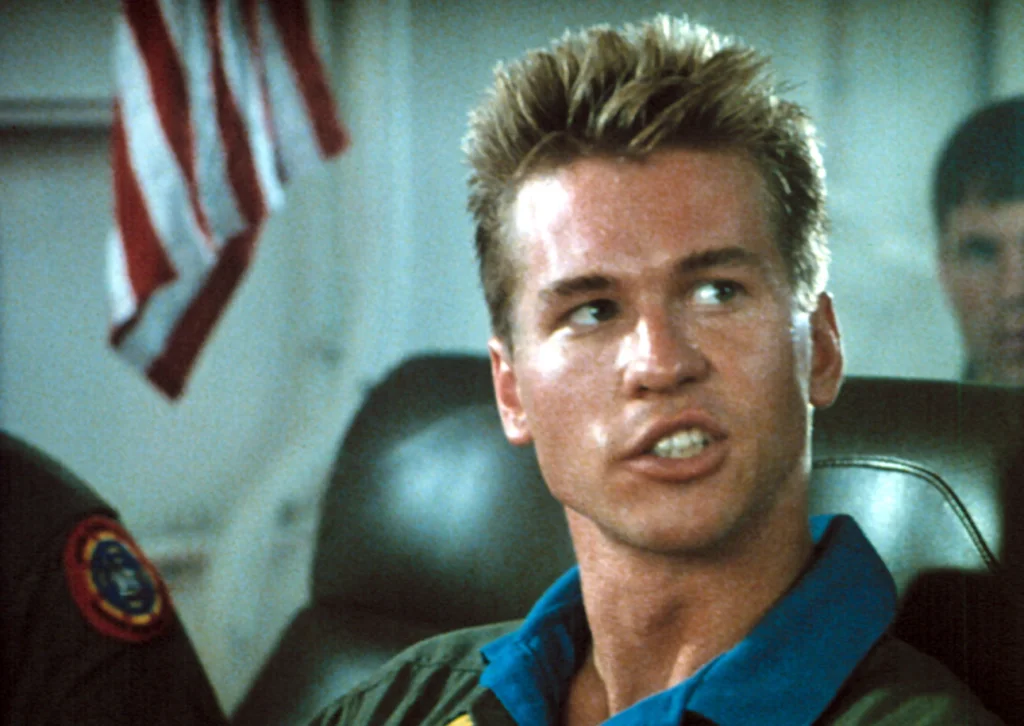
Kilmer’s breakthrough as the arrogant, chomping pilot Tom “Iceman” Kazansky in “Top Gun” created one of cinema’s great rivals—the perfect foil to Tom Cruise’s Maverick with his blend of intimidating skill and psychological warfare. With his platinum blonde hair and perfectly timed glares, Kilmer crafted a character who communicated volumes through physicality and facial expressions, establishing himself as a magnetic screen presence who could steal scenes with just a look. The role made him a bonafide star, but rather than simply playing himself as many newly minted heartthrobs might, Kilmer imbued Iceman with specific character choices that elevated him beyond the typical 1980s antagonist.
His return to the role decades later in “Top Gun: Maverick,” following his real-life battle with throat cancer, transformed Iceman into a poignant figure whose communication challenges mirrored Kilmer’s own health struggles. This brief but powerful appearance connected his early career with his later years, showing how his commitment to authentic performance remained constant throughout his life. The reunion scene between Iceman and Maverick carries additional emotional resonance now, serving as a fitting farewell to a character that bookended his remarkable career.
6. Simon Templar in “The Saint” (1997)
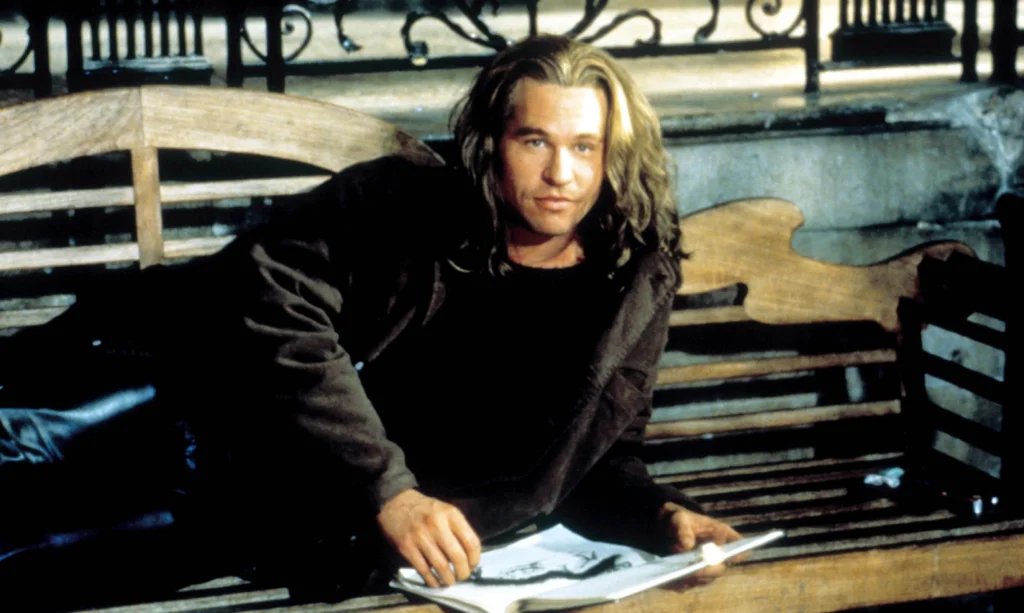
In “The Saint,” Kilmer took on not just one role but multiple identities as master of disguise Simon Templar, showcasing his transformative abilities by adopting various accents, gaits, and personas throughout the film. Each of Templar’s aliases—from a nerdy scientist to a flamboyant artist to a cold German industrialist—featured distinctive vocal patterns and physical mannerisms that demonstrated Kilmer’s remarkable range and attention to detail. The film essentially functions as a one-man showcase for his chameleon-like talents, with Kilmer effectively playing a character who himself is a consummate actor.
What elevates his performance beyond mere technical showmanship is how Kilmer gradually reveals the loneliness beneath Templar’s constant identity shifts, particularly as he falls for Elisabeth Shue’s scientist character. Kilmer manages the difficult feat of creating emotional continuity across multiple disguises, allowing viewers to see glimpses of the real man beneath the masks. This multilayered performance highlighted Kilmer’s status as an actor’s actor—someone who approached even commercial projects with intellectual curiosity and a determination to find psychological truth.
7. Philip II of Macedon in “Alexander” (2004)
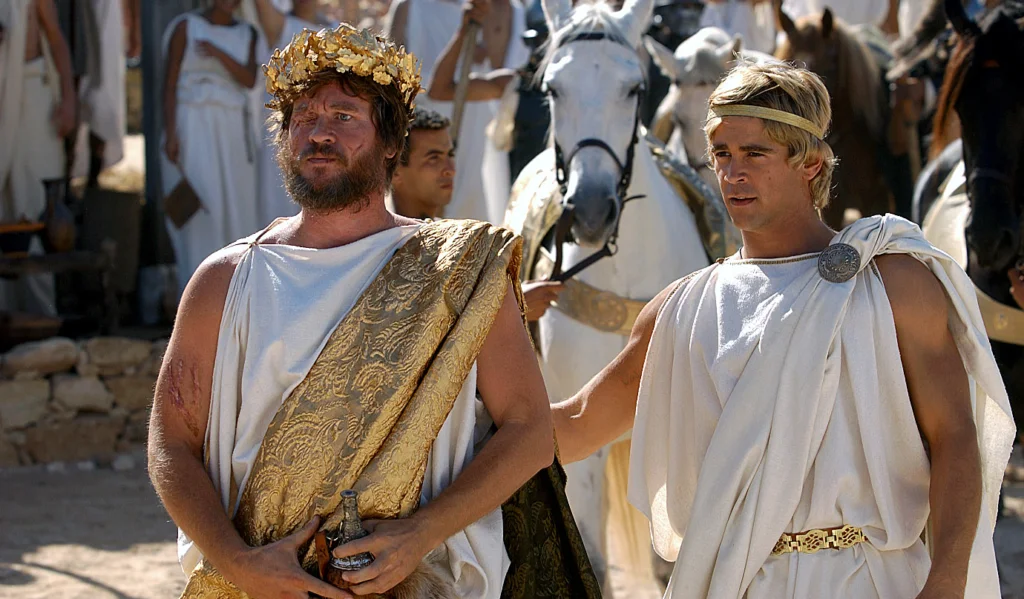
In Oliver Stone’s epic “Alexander,” Kilmer transformed into the one-eyed Macedonian king Philip II, father to Colin Farrell’s Alexander the Great, delivering a performance of Shakespearean intensity. With a gruff voice, weathered appearance, and physically imposing presence, Kilmer captured the essence of a battle-hardened ruler whose strategic brilliance was matched by his personal brutality. His scenes with Angelina Jolie, who played Alexander’s mother Olympias despite being only one year older than Farrell, crackle with dangerous energy, showcasing Kilmer’s ability to suggest complex historical dynamics without modern psychological simplification.
The physical transformation was remarkable, with Kilmer wearing a prosthetic eye and adopting the hunched, powerful stance of a warrior king whose body bears the evidence of countless battles. Each of Philip’s movements suggests decades of military discipline and royal authority, creating a character whose influence on his son—and by extension, world history—feels palpable and profound. This supporting role demonstrated Kilmer’s continued willingness to transform himself completely for historical accuracy, regardless of vanity or screen time.
8. Gay Perry in “Kiss Kiss Bang Bang” (2005)
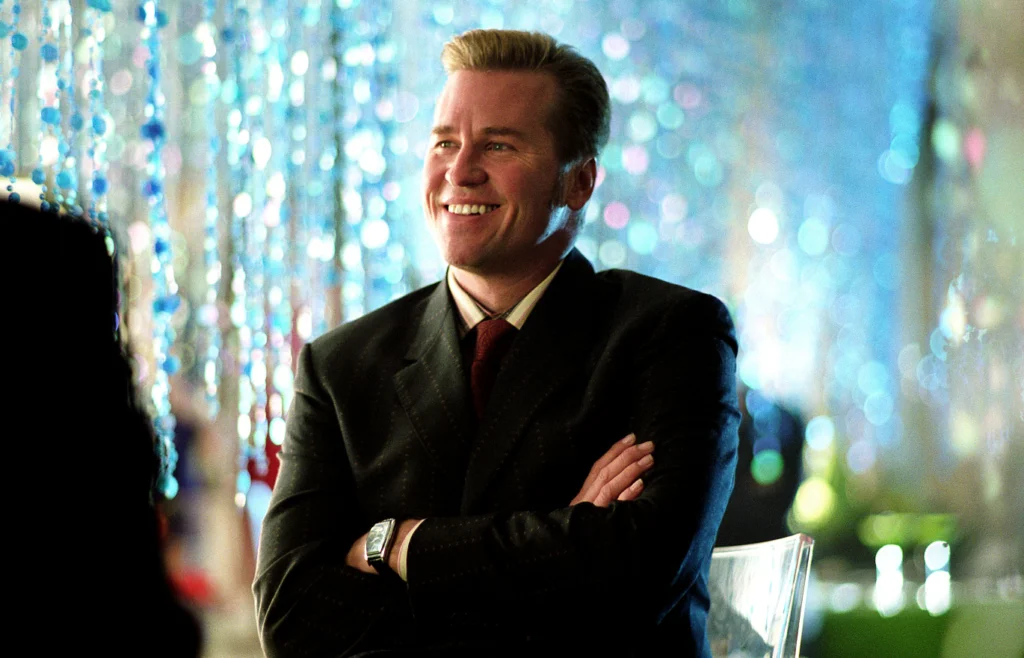
In Shane Black’s neo-noir comedy “Kiss Kiss Bang Bang,” Kilmer revealed his exceptional comic timing as “Gay Perry,” a sharp-tongued private investigator whose sexuality is just one aspect of a complex, fully-realized character. His rapid-fire delivery of Black’s witty dialogue created perfect chemistry with Robert Downey Jr.’s character, establishing one of cinema’s most entertaining reluctant partnerships. Kilmer’s performance is a masterclass in balancing comedy with action, never allowing Perry to become a stereotype while still mining the character’s sarcastic worldview for genuine laughs.
What makes this performance particularly refreshing is how Kilmer plays against the hyper-masculine roles that defined much of his earlier career, demonstrating his remarkable versatility and willingness to subvert audience expectations. His portrayal helped revitalize his career at a time when many had typecast him, reminding Hollywood of his considerable range and perfect comic timing. This role stands as evidence of Kilmer’s fearlessness as a performer, always willing to reinvent himself rather than rely on established screen persona.
9. Moses in “The Prince of Egypt” (1998)
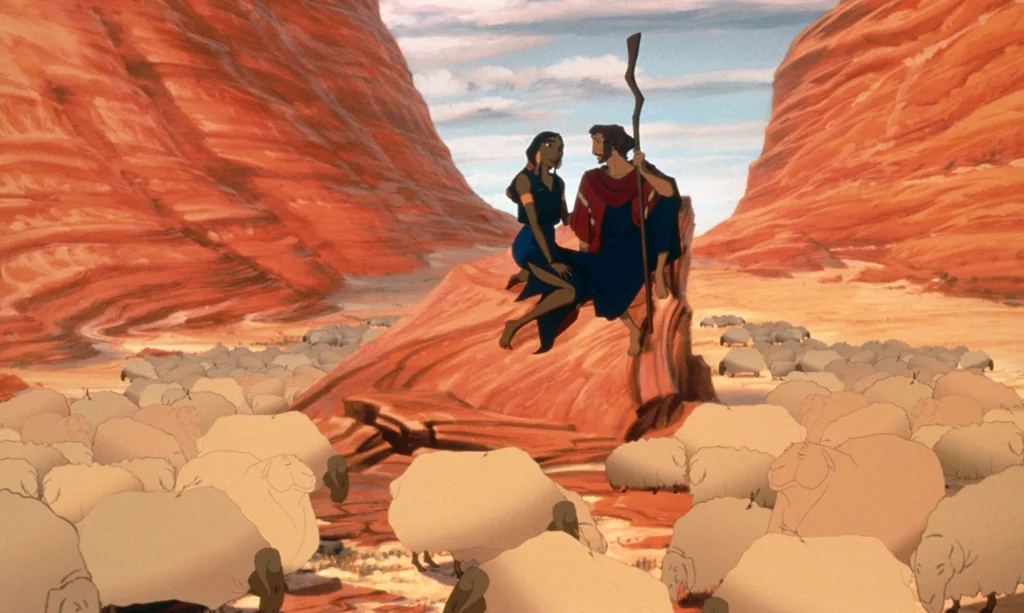
Though only his voice appears in the animated biblical epic “The Prince of Egypt,” Kilmer’s dual performance as Moses and the voice of God demonstrated his extraordinary vocal talent and emotional range. His voice work for the reluctant prophet evolves throughout the film, beginning with youthful arrogance as an Egyptian prince and gradually transforming into the measured tones of a spiritual leader carrying the tremendous burden of his people’s freedom. The decision to have Kilmer voice both Moses and God creates a beautiful thematic resonance, suggesting the divine speaking through the human in moments of spiritual significance.
The scene where Moses encounters the burning bush stands as one of animation’s most powerful moments, with Kilmer essentially performing a dialogue with himself that never feels gimmicky or forced. His vocal performance captures Moses’s journey from privilege to purpose with remarkable nuance, proving that Kilmer’s transformative abilities extended beyond physical appearance to the very quality and character of his voice. This often-overlooked performance highlights his versatility across mediums, showing the same commitment to animated characters that he brought to live-action roles.
10. Mark Twain in “Mark Twain and Mary Baker Eddy” (One-Man Show)

In his self-produced one-man stage show exploring the relationship between Mark Twain and Mary Baker Eddy, Kilmer underwent perhaps his most painstaking transformation, disappearing completely into the celebrated American author. This passion project, which he performed in various venues beginning in 2012, featured Kilmer aging himself decades through makeup and physicality to capture Twain’s distinctive appearance and mannerisms. The performance reflected years of research into Twain’s writings, speeches, and personal history, with Kilmer crafting a three-dimensional portrait of the author’s wit, wisdom, and complexity.
What makes this transformation particularly poignant is how it represented Kilmer’s transition from Hollywood leading man to independent artist pursuing personal creative interests. The project’s development coincided with the beginning of Kilmer’s health challenges, making his commitment to such a physically and vocally demanding one-man show all the more impressive. This lesser-known achievement in his career demonstrates the artistic integrity that defined his approach to acting—a willingness to disappear so completely into a character that his own identity became secondary to the truth he sought to reveal.
Val Kilmer’s legacy as an actor remains defined by this remarkable ability to transform—not just physically, but spiritually—into every character he portrayed. His recent passing leaves us with a body of work that demonstrates the power of complete artistic commitment, showing future generations of actors what it means to truly disappear into a role. As we revisit his performances in tribute, we’re reminded that the greatest actors don’t simply play characters but temporarily become them—and in this rare and precious skill, Kilmer had few equals in his generation or any other.


